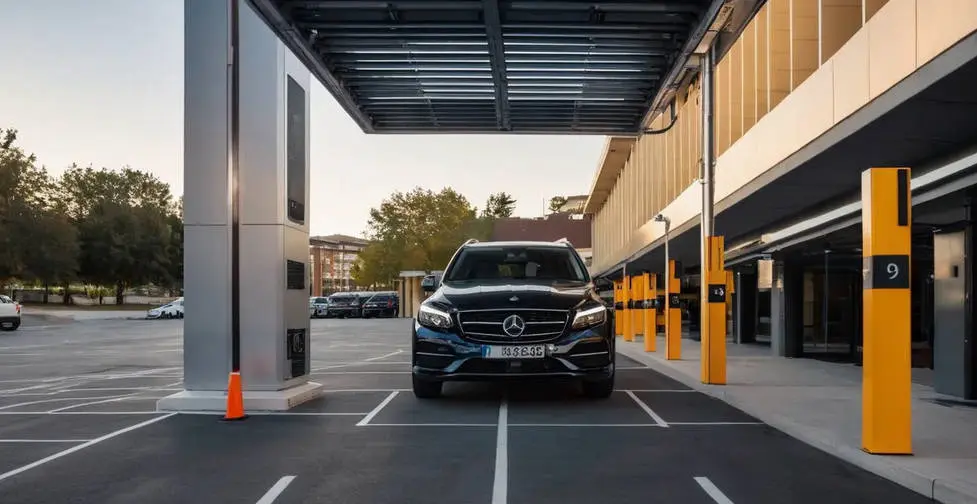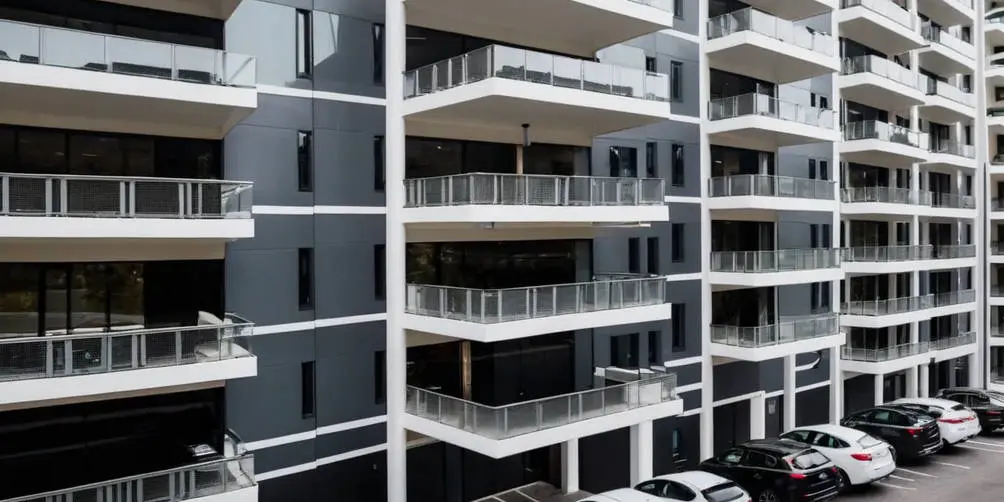Finding convenient parking is often one of the most frustrating aspects of traveling and staying at hotels. You’ve finally arrived at your destination after a long day on the road, luggage in hand, only to be faced with navigating a labyrinthine parking garage or lot. Modern vertical parking systems offer hotels an efficient and compact alternative to traditional ground-level parking structures by stacking vehicles vertically in a mechanized system. As urban hotels face spatial constraints and rising land values, vertical parking presents an innovative way to maximize space while enhancing guest convenience.
The Evolution of Parking Infrastructure
Since the early 20th century, multi-level concrete parking garages have provided essential capacity for increased motorization in cities. These imposing structures allow cities to accommodate growing numbers of vehicles. However, traditional garages require substantial space dedicated to sloped ramps between levels. They also necessitate ample room for vehicles to maneuver into parking spaces. As land values climb, constructing such large-footprint garages becomes exorbitantly expensive.
 In the 1920s, the distinct Ferris wheel-shaped “paternoster” automated parking system emerged as a more compact mechanical parking solution. Paternoster systems, still common globally today, utilize elevator platforms and a vertical carousel to store vehicles stacked closely side-by-side. While the paternoster efficiently parks cars, its automated nature left early systems prone to mechanical problems and lengthy wait times.
In the 1920s, the distinct Ferris wheel-shaped “paternoster” automated parking system emerged as a more compact mechanical parking solution. Paternoster systems, still common globally today, utilize elevator platforms and a vertical carousel to store vehicles stacked closely side-by-side. While the paternoster efficiently parks cars, its automated nature left early systems prone to mechanical problems and lengthy wait times.
Recent decades have seen substantial innovation refining automated and robotic parking technology. With urban real estate at a premium, compact vertical parking devices have witnessed growing adoption at space-constrained sites ranging from mixed-use towers to transit stations. Hotels, too, are beginning to explore the benefits of automated vertical parking to maximize limited building footprints.
Maximizing Functionality of Hotel Footprints
From upscale high-rise properties to boutique inns, hotels in urban markets face considerable spatial constraints. Properties situated in dense city centers often contend with tight, irregularly shaped lots. Luxury brands may acquire signature inner-city locales lacking room for sprawling surface parking. For urban hotels, building underground parking garages deeply excavates expensive downtown land.
Vertical parking systems allow hotels to provide essential parking capacity within a fraction of the real estate. While a 50-vehicle traditional lot requires over 1,650 square meters, a comparably sized vertical system fits into under 50 square meters. By automatically stacking vehicles in tight mechanical storage, hotels can dedicate prime space to revenue-generating rooms and amenities rather than parking infrastructure.
Purpose-built automated vertical parking facilities serve leading urban hotels worldwide. The Plaintiff Grand Hotel in Barcelona, Spain features an advanced automated parking garage immediately beneath the soaring, Pritzker Prize-winning hotel. Self-parking elevator platforms allow efficient storage and retrieval of vehicles just steps from the lobby. Luxury properties from San Francisco to Singapore have integrated similar vertical parking systems to maximize developable space.
Enhancing Guest Convenience
Vertical parking offers clear area efficiencies, but also substantially improves the parking experience. No longer must guests navigate down endless ramps in search of an open space. Instead, automated systems require only dropping off the vehicle at an entry vestibule. Upon returning to retrieve their car, guests simply insert a ticket, and the system robotically delivers the parked vehicle back to the exit.
Freed from wasteful driving within garages, the automated process also reduces emissions and environmental impact. Enclosed storage separated from pedestrians further enhances safety and security. Damage from scrapes and dents within the garage is also minimized without customers maneuvering vehicles into tight spaces themselves.
The automated nature of vertical parking particularly suits business travelers on rigid schedules. Guests can rapidly park upon arriving and retrieve their vehicle without potential delays searching for their space. Even the largest facilities promise retrieval in under two minutes on average. Rapid access allows visitors to maximize time spent at trade shows and meetings rather than wasting valuable minutes parking.
Facilitating Special Events
While automated parking systems efficiently handle typical hotel capacity, venues depending on surge traffic during special events often experience parking challenges. Traditional garages filled to the brim during peak times force many attendees at large-scale conferences or seminars to seek remote satellite parking and shuttle transport. Similarly, over capacity conditions could discourage leisure travelers from choosing to visit during major festivals or sports tournaments converging on the area.
Intelligently planned vertical parking infrastructure with adequate capacity, however, can accommodate drastic spikes in demand. Customized automated systems allow venues to handle parking requirements far surpassing the needs of average occupancy. By designing facilities specifically for maximum loads, hotels avoid turning away attendees or inconveniencing guests during especially impactful events.
Instead, visitors arriving for highly attended happenings are greeted with rapid, reliable vertical parking facilitating their hotel stay. Events ranging from local college football rivalries to political conventions rely on venues with parking capabilities scaled for substantial crowds. Proactively installing vertical infrastructure prepares hotels to attract and smoothly serve these periodic high-traffic occurrences.
The Future of Vertical Parking
While still gaining wider adoption domestically, rapid urbanization globally will likely continue driving automated parking systems into the mainstream. Land conservation concerns, sustainability initiatives, and infrastructure cost savings will further propel vertical parking integration.
 Early technical difficulties that hindered reliability have largely been overcome with modern monitoring and redundancy safeguards. With capacities already handling thousands of vehicles in infrastructure-forward Asian and European cities, dependable vertical parking has firmly demonstrated feasibility even for high-volume locations.
Early technical difficulties that hindered reliability have largely been overcome with modern monitoring and redundancy safeguards. With capacities already handling thousands of vehicles in infrastructure-forward Asian and European cities, dependable vertical parking has firmly demonstrated feasibility even for high-volume locations.
As forward-looking hotels increasingly turn to vertical parking solutions, they position their properties to thrive amid intensifying land use pressures. Streamlined space savings and improved customer experiences will ultimately allow brands to direct resources toward core hospitality offerings. By leaping past traditional parking infrastructure limitations, hotels can focus on delivering their quintessential services more effectively. Just as prominently as glittering towers define skylines, vertical parking facilities below promise to underpin hotels efficiently serving urban travelers into the future.
